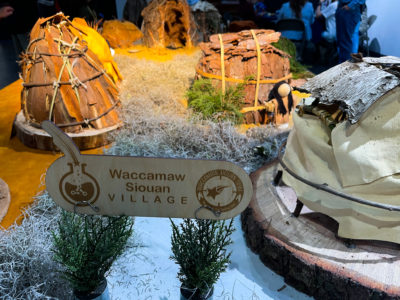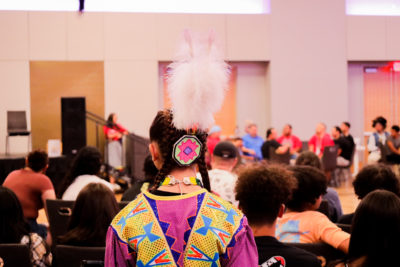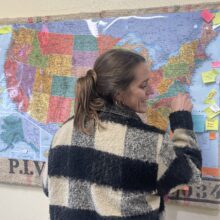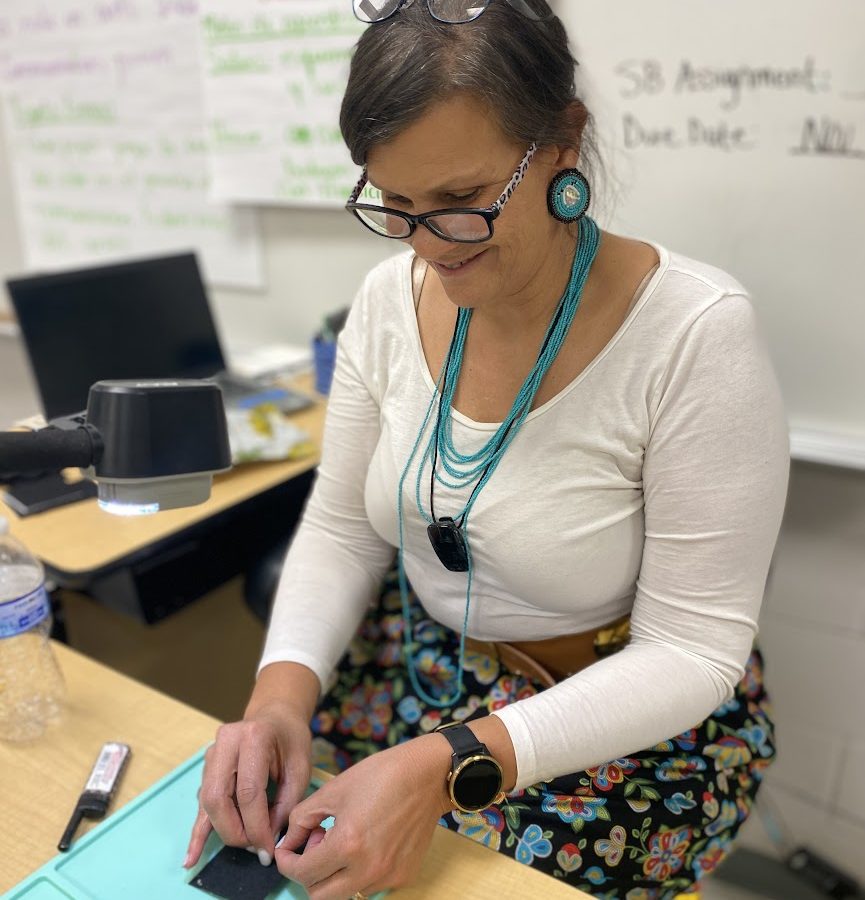
Share this story
|
|
Angelique Young moves her hands in a J-shaped motion as she describes the migration of her people down from the Lost Colony to southeastern North Carolina. She is a member of the Coharie Indian Tribe, descendants from the Neusiok Indians, who are predominately located in Harnett and Sampson counties.
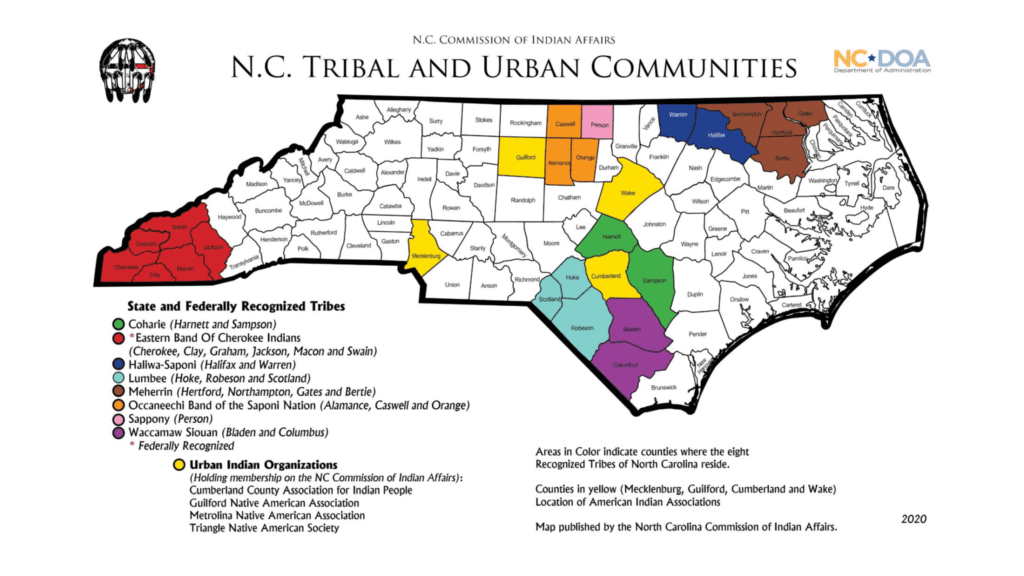
Young has worked in education for nearly 20 years, most of it as a teacher, and more recently as a school counselor. She is a member of the State Advisory Council for Indian Education, and one can usually find her at Sampson Middle School.
Today, however, she is in the art classroom down the road at Union High School, seeing some familiar student faces and teaching them traditional beadwork and stitching.
Young is working with these high school art students as part of a kick-off to a deeper dive into native art forms of American Indians. This project focuses on a talent of Young’s: beadwork.
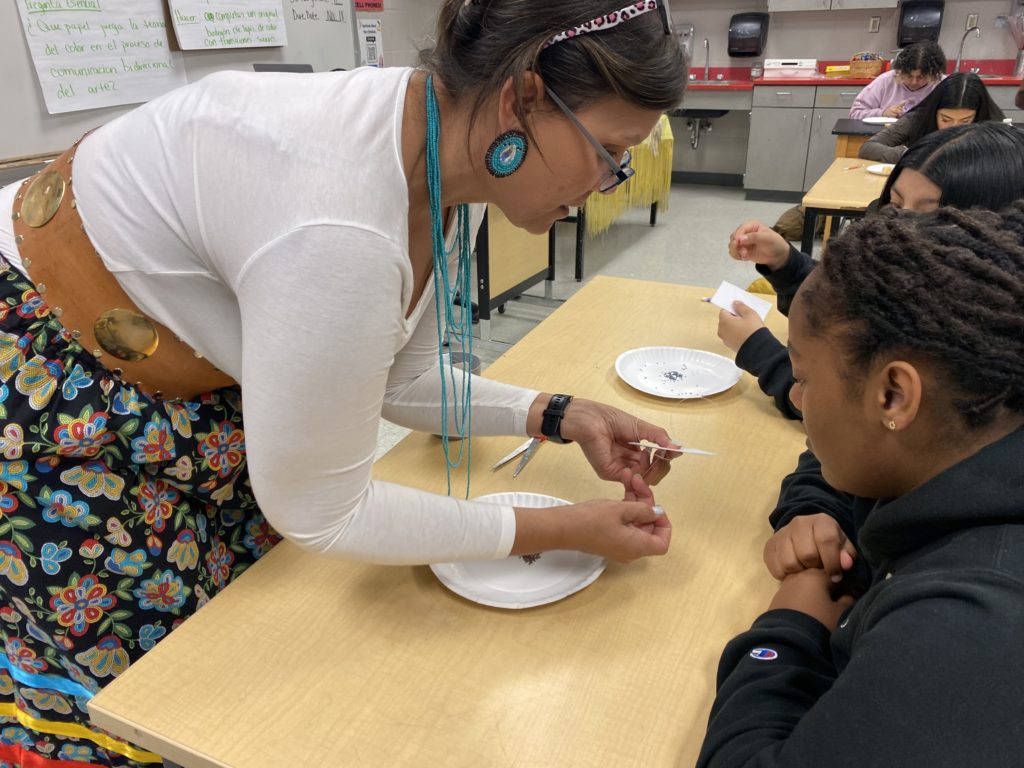
She grew up practicing this skill at her local church after school, learning from her cousin and the Indian education coordinator. She said for her community, the church was the central meeting place.
North Carolina has the largest Indigenous population east of the Mississippi River, with seven state-recognized tribes and one federally recognized tribe. November is National Native American Heritage Month, a federal designation.
Young said there is a growing awareness of Native American populations and their culture among the general public. We are seeing more and more Indigenous representation in our government as well as other places of prominence.
Young believes exposing students to Native American culture peeks curiosity. And not just about Indigenous history, but gets students wanting to explore their own. She thinks these types of lessons will stick with students long after they finish their art project.
At the beginning of class, resident art teacher Ashley Knowles introduces Young. She knows Sampson County is home to an active Native American tribe with a rich history, and she wants her students to know that too.
“They’re a population of people who are often overlooked, and I want to help sort of change that, at least here in this community,” Knowles said.
Knowles applied for a Simple Gifts Fund to sponsor the lesson. This grant awarded her money for materials and Young’s time. Knowles looks at this art lesson as a way to facilitate an opportunity for her students to understand the Native population right in their home county.
To produce the project, students use string, needle, beads, a small block of wax, a circle piece of felt, and a dollop of glue. The wax is used to strengthen the string, where traditionally grease, lard, or other animal elements were used on the thread.
The class learns about the Coharie Indian Tribe, how to sew a flat stitch, and gets the opportunity to connect the dots between their veteran educator Young and her background.
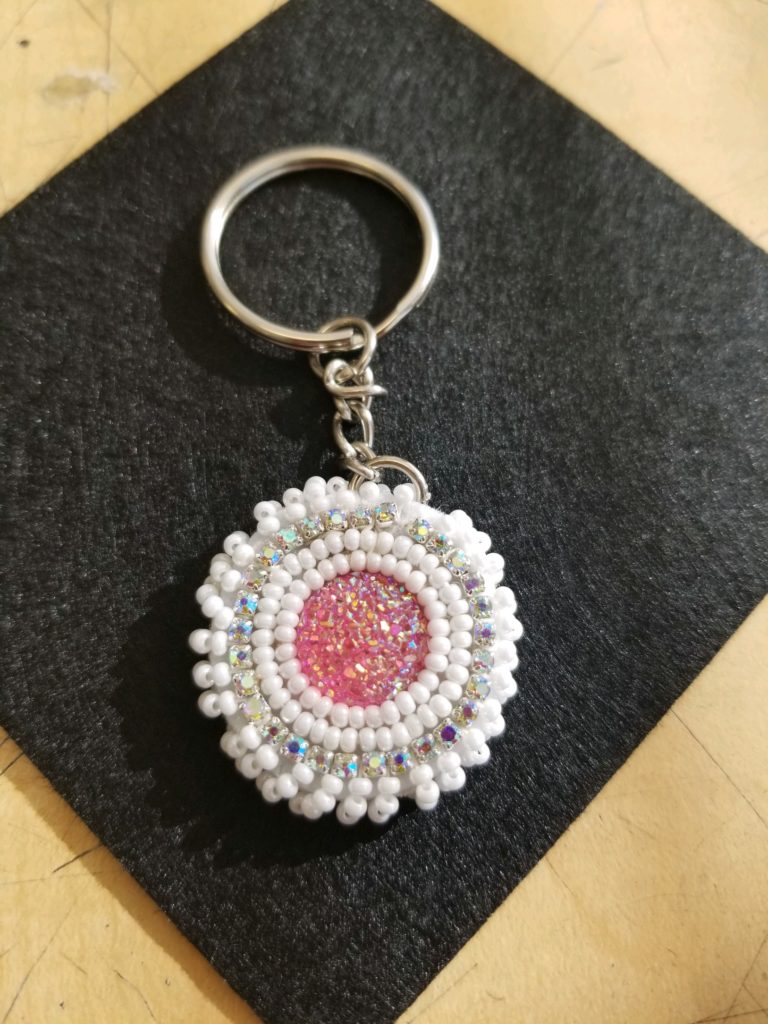
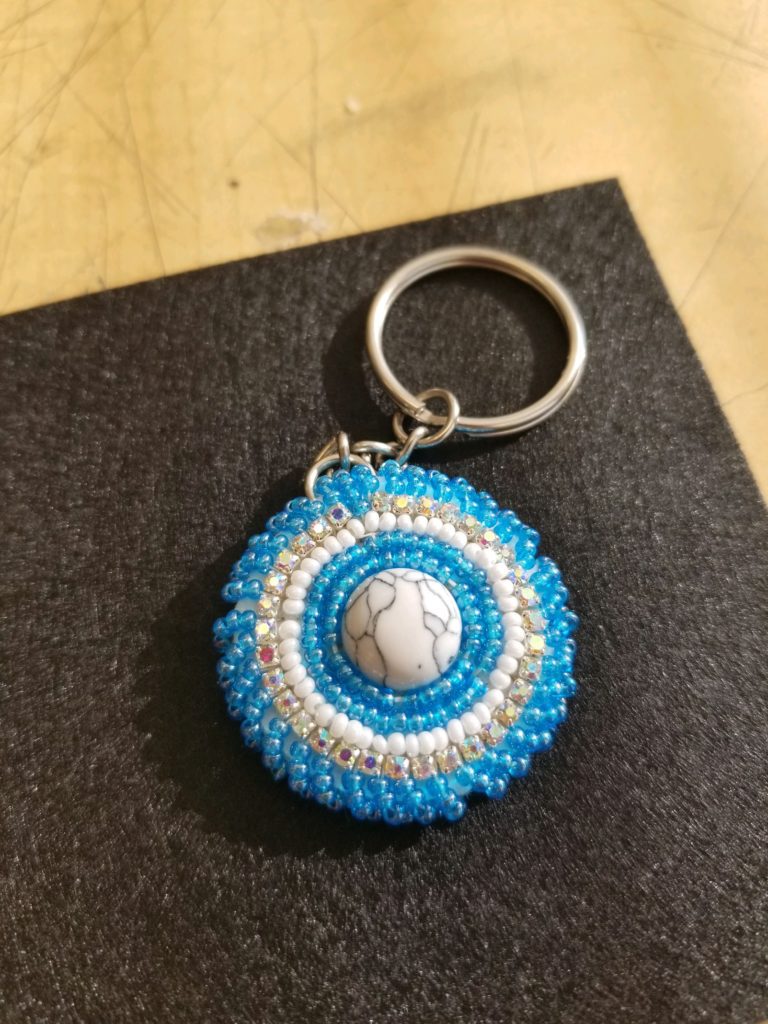
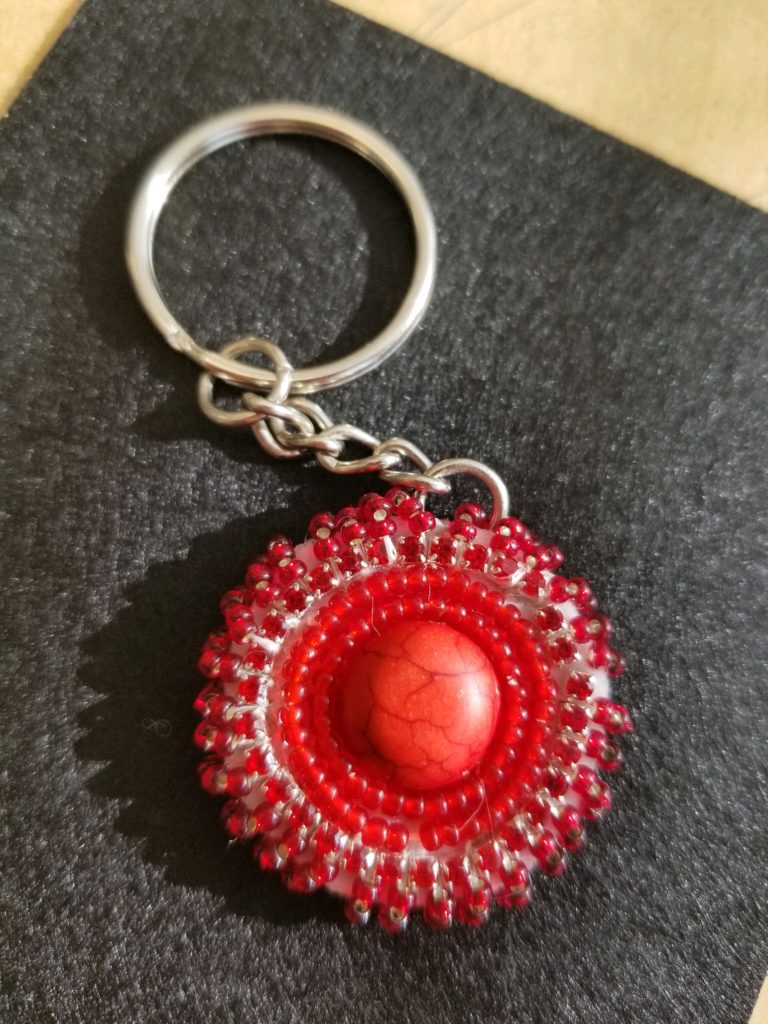
“I like that we’re learning new things, and how we’re learning new skills about Native Americans and how they use what they had in their resources to create jewelry and accessories,” said Union High School senior Maria Ramos.
Young will return in the spring for another lesson.
Editor’s note: Funding from the Simple Gifts Fund of the Anonymous Trust made this lesson possible. The Anonymous Trust supports the work of EducationNC.
Recommended reading
